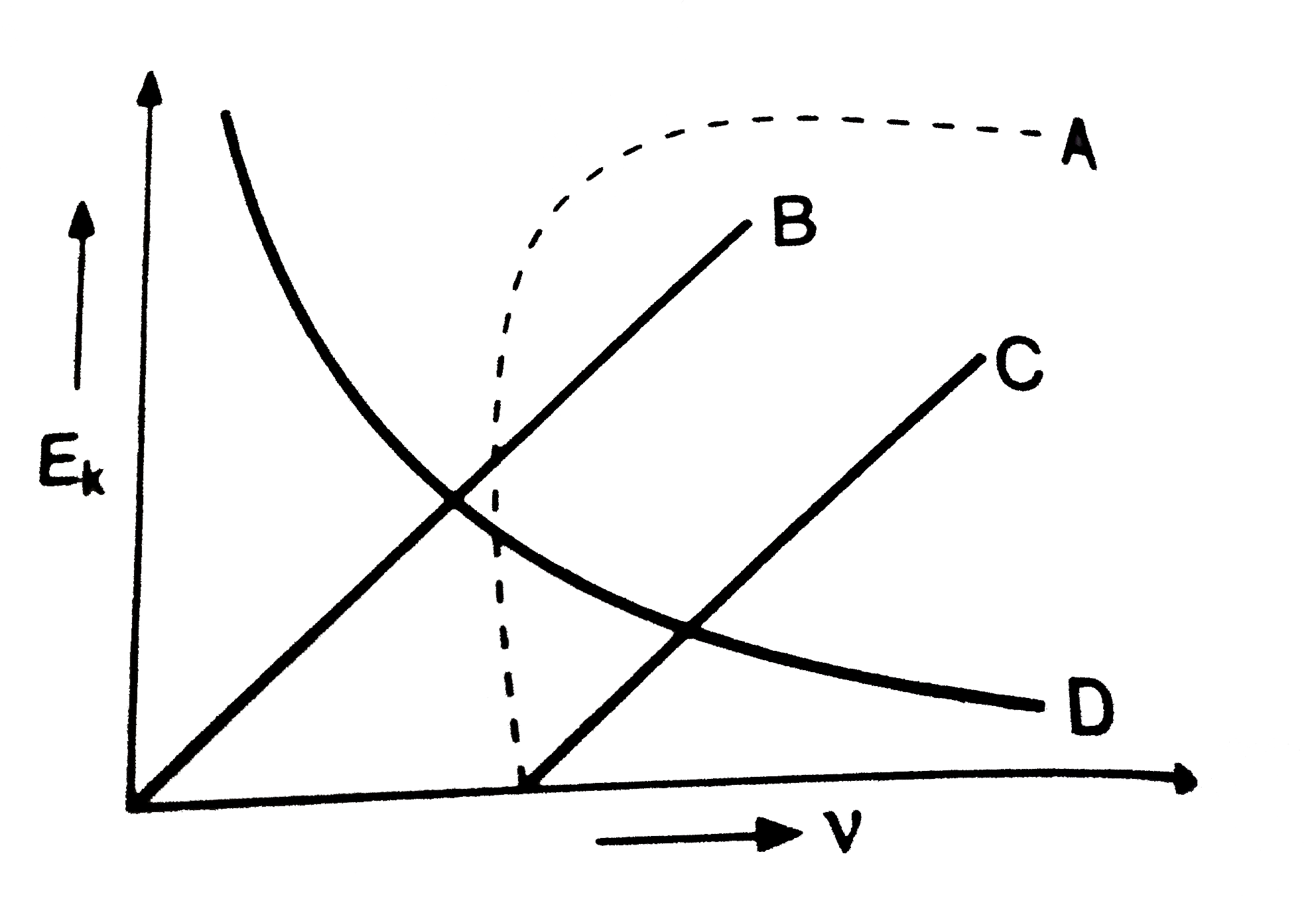Statement - 1 : When ultraviolet light is incident on a photocell , its stopping potential is V0 and the maximum kinetic energy of the photoelectrons is Kmax when the ultraviolet light is replaces by X- rays both V0andKmaxincrease
Statement - 2 : Photoelectrons are emitted with speeds ranging from zero to a maximum value became of the range of frequencies present in the incident light
Statement I is true, Statement II is true, statement II is a correct explanation of statement I.
Statement I is true, Statement II is true, statement II is Not a correct explanation for statement I.
Statement I is false, Statement II is true
Statement I is true, Statement II is false
The correct Answer is:D
Step by step video, text & image solution for Statement - 1 : When ultraviolet light is incident on a photocell , its stopping potential is V_(0) and the maximum kinetic energy of the photoelectrons is K_(max) when the ultraviolet light is replaces by X- rays both V_(0) and K_(max)increase Statement - 2 : Photoelectrons are emitted with speeds ranging from zero to a maximum value became of the range of frequencies present in the incident light by Physics experts to help you in doubts & scoring excellent marks in Class 12 exams.
Topper's Solved these Questions
- BOOK - NARAYNACHAPTER - DUAL NATUREEXERCISE - NCERT BASED QUES.26videos
DUAL NATURE
- BOOK - NARAYNACHAPTER - DUAL NATUREEXERCISE - LEVEL-V31videos
DUAL NATURE
- BOOK - NARAYNACHAPTER - DUAL NATUREEXERCISE - LEVEL-II (C.W)20videos
DUAL NATURE
- BOOK - NARAYNACHAPTER - DUAL NATURE OF RADIATION AND MATTEREXERCISE - ASSERTION AND REASON15videos
DUAL NATURE OF RADIATION AND MATTER
- BOOK - NARAYNACHAPTER - ELECTRIC CHARGES AND FIELDSEXERCISE - EXERCISE -443videos
ELECTRIC CHARGES AND FIELDS
Similar Questions
Knowledge Check
- Question 1 - Select One
Statement - 1 : When ultraviolet light is incident on a photoncell , its stopping potential is V0 and the maximum kinetic energy of the photoelectrons is Kmax when the altraviolet light is replaces by X- rays both V0andKmaxincrease
Statement - 2 : photoelectrons are emitted with speeds ranging from zero to a maximum value because of the range of frequencies present in the incident lightAStatement - 1 is true , statement - 2 is true , statement - 2 is the correct explanation of statement - 1BStatement - 1 is true , statement - 2 is true , statement - 2 is not the correct explanation of statement - 1CStatement - 1 is false , statement - 2 is trueDStatement - 1 is true , styatement - 2 is false - Question 2 - Select One
When ultraviolet light is incident on a photocell, its stopping potential is V0 and the maximum kinetic energy of the photoelectrons is Kmax. When X-rays are incident on the same cell, then:
AV0 and Kmax both increaseBV0 and Kmax both decreaseCV0 increases but Kmax remains the sameDKmax increases but V0 remains the same - Question 3 - Select One
Light of frequency 4v0 is incident on the metal of the threshold frequency v0. The maximum kinetic energy of the emitted photoelectrons is
A3hv0B2hv0C32hv0D12hv0
Light of frequency 8×1015Hz is incident on a substance of photoelectric work function 6.125eV. The maximum kinetic energy of the emitted photoelectrons is
View SolutionLight of wavelength 4000 Å is incident on a metal surface. The maximum kinetic energy of emitted photoelectron is 2 eV. What is the work function of the metal surface ?
View SolutionThe photoelectric threshold 4v is incident on the metal is v. When light of frequency 4v is incident on the metal, the maximum kinetic energy of the emitted photoelectron is
View SolutionAssertion : The stopping potential depends on the frequency of incident light.
Reason : The stopping potential is related to maximum kinetic energy by eV0=Kmax.View SolutionThe photoelectric threshold frequency of a metal is v. When light of frequency 4v is incident on the metal . The maximum kinetic energy of the emitted photoelectrons is
View Solution

